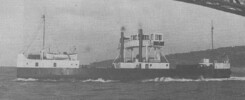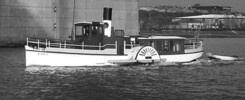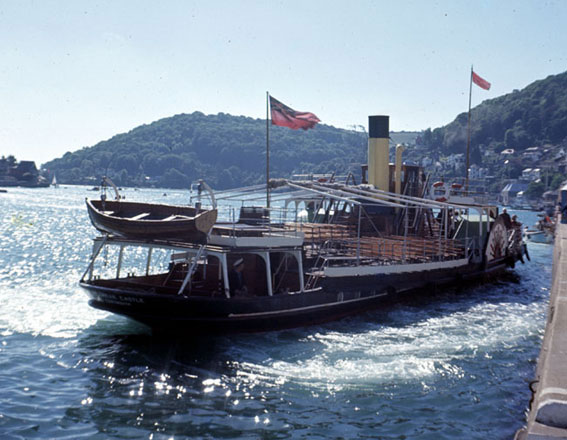
With a huge passenger capacity of around five hundred each, the Dart paddle steamers Kingswear Castle, (pictured above at Dartmouth in the early 1960s), Compton Castle and Totnes Castle could, between them, put around 1,500 people afloat at any one time. There must therefore have been countless photographs taken of them by countless happy holiday makers and countless locals over the years. Are these pictures now tucked away in attics? Are they treasured parts of individual collections? Have they been thrown into rubbish bins as houses are cleared and generations move on? Whatever their fate, finding shots of these steamers in their heyday on the Dart has been surprisingly difficult. So it was a real pleasure to discover these excellent photographs taken on family holidays in the early 1960s by the young violinist Peter Stevens.
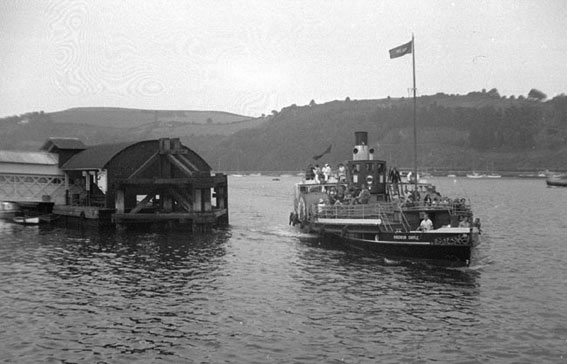
Kingswear Castle makes her approach to berth at the quay at Dartmouth. To the left is the Dartmouth railway station. You might well say that it looks more like a pontoon than a railway station and you would be right. But it was owned by the Great Western Railway (and later British Railways) and was technically a destination to which you could buy a ticket at any other railway station anywhere in the UK, the connection being made made from the railway at Kingswear by the railway owned ferry, for many years operated by the veteran steamship, the Mew. Dartmouth was often referred to as the only railway station in the UK without railway lines!
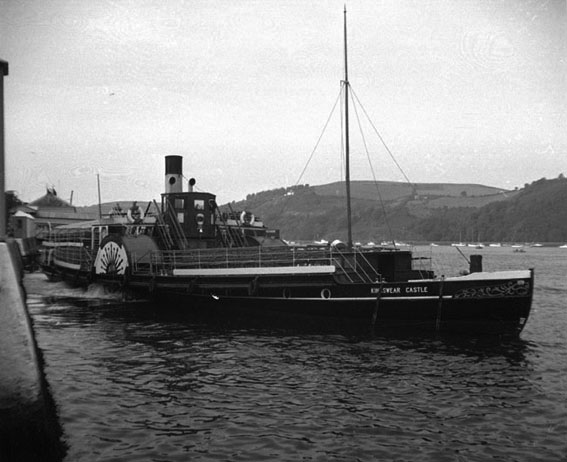
The current generally runs in a northerly direction along the quay at Dartmouth whether the tide is going in or out so it was pretty much the invariable practice for the steamers to berth starboard side to. Not surprisingly, after a lifetime of berthing starboard side to at Dartmouth and starboard side to at Totnes, the starboard sponson of Kingswear Castle was in a much poorer condition than the port with the rubbing band around the paddle box quite definitely inset compared with the other side. Note the large quantity of rubber tyres along the side of the ship to cushion the landings.
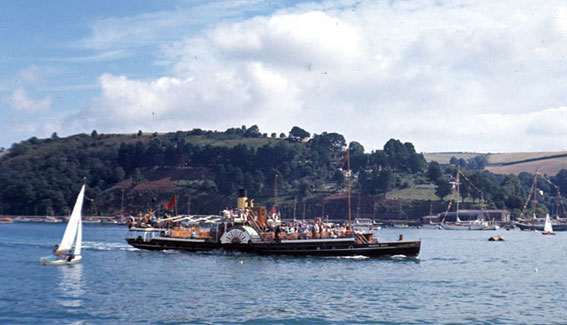
Kingswear Castle returning to Dartmouth from Totnes on a beautiful sunny day having just passed the Britannia Royal Naval College. I recollect one of the old Dart captains, Capt Rehburg, telling me years ago with a twinkle in his eye that there was sometimes a bit of a battle of wills between the young midshipmen from the college gaining their first experience of command in sailing dinghies on the river and the long standing paddle steamer captains. Having just started to learn the International Collision Regulations the former had a tendency to hold the rather optimistic view that steam should give way to sail, a view not always shared by those on the bridge of the paddlers, particularly if the sail in question involved an assertive midshipman.
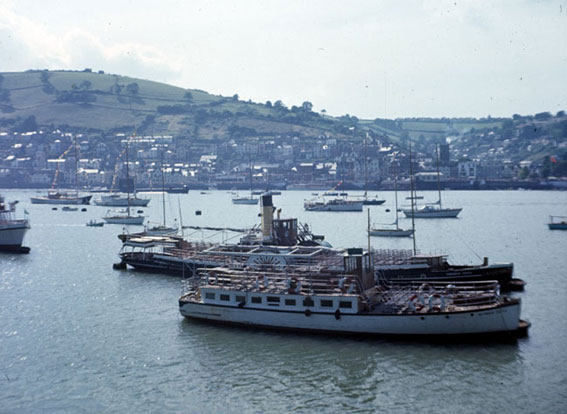
At the end of each day the steamers made their way to the moorings on the Kingswear side of the river. Here the current generally flows in a southerly direction for most of the tidal cycle so it was the usual practice to moor head up river. As this picture shows, there was not a lot of room between the moorings and this must have been a tricky manoeuvre, particularly in adverse weather given the paddlers shallow draft of only 1m at the bow and their resultant tendency to be blown around by the wind.
My thanks to Peter Stevens for permission to use these stunning pictures which give such a wonderful flavour of our steamer in her former life.
Kingswear Castle returned to service in 2023 after the first part of a major rebuild which is designed to set her up for the next 25 years running on the River Dart. The Paddle Steamer Kingswear Castle Trust is now fund raising for the second phase of the rebuild. You can read more about the rebuilds and how you can help if you can here.
John Megoran

